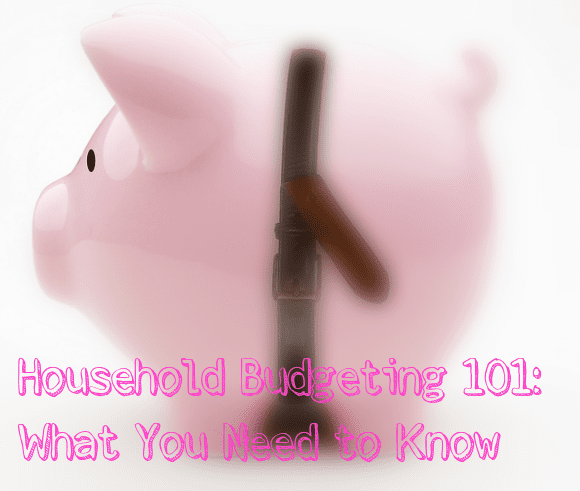Are you trying to save more money, pay off debt or otherwise spend your money wisely?
It’s hard to do that if you don’t have any idea of where your money is going. Here are some easy steps to help your household budgeting for the rest of the year.
Household Budgeting – Spending
Figure out your monthly income:
- If you get a paycheck, use your net income; i.e. your income minus all taxes and other deductions from your paycheck.
- Be sure and track other sources of income from self employment, dividends, etc.
Next, figure out how much you are spending:
- For a month, track all of your expenses. There are programs (Quicken) that will help you do this, but you can use a spreadsheet (Excel) or even a simple columnar pad of paper to get started.
- Figure out what your fixed expenses are. These are the expenses that are the same month after month, like your mortgage, car payment, cable bill, etc. If you have fixed yearly expenses, divide them by 12 to get a monthly amount.
- For your variable expenses, if you use mostly credit and debit cards, you can pull information right from the monthly statements. If your family uses cash, you’ll need to designate a spot to collect receipts. A centralized location like a basket on the kitchen counter works best. The hardest part about household budgeting is getting everyone in your family to put them there! At the end of the week, enter them into whatever system you are using.
- A key to creating a system that will work for you is to define the right categories. One person may want to know how much he spends on his car. Another may want to know how much she spends on repair, gas, tolls, etc. for each car that she owns. My suggestion is that you start off with fewer categories. If you try to track too many, you may get discouraged and quit before you get anywhere. You can always get more detailed later.
Once you know how much you spend each month, you are ready to start a household budget.
If you are spending less than your income, congratulations! Find a reputable financial planner to help you meet your retirement, education, vacation or other goals.
Household Budgeting – Income
If you are spending more than your income:
- Take a look at expenses and decide which ones can be reduced so that you are spending within your income level. Set a monthly amount not to exceed for each category.
- Once a week, record everything you’ve spent by category so you can see how you are doing against the monthly amounts you set for yourself.
- At the end of the month, make adjustments as necessary.
- Once you have your expenses under control, you can designate an amount each month for paying off debt.
The more you understand where your money is going, the easier it will be to reach your financial goals.
These great tips are brought to you by Cathy Dryden of Neat Chic Organizing {visit her online}. If you are having trouble setting up a system to track your expenses and create a budget, Cathy would be happy to help.
Budgeting is a very important part of building a personal insurance program.
If you have any questions about our auto and home insurance programs you can call us at (518) 456-6688.
Thank you and Good luck,
Ryan Hanley, CIC
photo credit: kenteegardin

